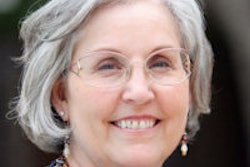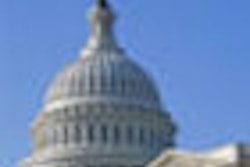
Older Americans use less dental care as wealth and income decrease, according to a study by University of Maryland researchers (Journal of Public Health Dentistry, Summer 2012, Vol. 72:3, pp. 179-189). But the decrease occurs only when their household wealth falls by 50% or more, they noted.
The analysis used data from the Health and Retirement Study (HRS) for Americans age 51 years and older, focusing on whether they visited the dentist at least once during the two-year period prior to the 2008 survey. However, the HRS lacked measures of oral health status and procedures administered by dental providers.
Overall, 66% of all older adults had a dental visit during the period. Dental utilization for the 65 and older age group in the U.S. has risen steadily since 1977 (30%) and 1987 (37%), the study authors found. Comparatively, estimates from Europe in 2004 based on annual recall survey data ranged between 26% in Spain to 77% in Denmark.
Elderly women were nearly 60% more likely to have visited a dentist than men, the researchers noted.
Although Medicare does not cover routine dental care, there is some limited dental coverage for those in the Medicare Advantage programs and low-income dual Medicare/Medicaid beneficiaries. As a result, retirees either lack dental coverage or gain coverage through a "standalone" private plan.
Wealth was measured as the total net value of real estate, vehicles, businesses, individual retirement accounts, stocks, bonds, investment trusts, checking, savings and money market accounts, certificates of deposit, and the value of all other savings and debt.
The researchers found the U.S. population of nearly 50 million households had a mean value of household wealth of $511,048 and greater than $25 trillion in total household wealth. People ages 65 to 79 live in households with the highest mean wealth, which declines as individuals reach age 80 and older.
The 14,970 participants in the sample represented 73.75 million people. More than half were women (59%, 8,820), 14% were non-Hispanic black (2,122), and 9% (1,346) were Hispanic. More than half of the sample (56%, 8,433) were classified as fully retired, 10% (1,550) as partially retired, 22% (3,295) as working, and 11% as not retired and not working.
"Our results using the HRS indicate that the net wealth of older Americans has a strong positive effect on the utilization of dental services independently of family income and other personal characteristics," the researchers concluded. "Not surprisingly, after controlling for wealth in our logistic regression, we find that persons 80 years and older are more likely to use dental services than those 69 years and younger."
The odds of using dental care are higher for older Americans who are white non-Hispanic, married, dentate, college graduates, in excellent or very good health, and who have dental coverage versus those who are black non-Hispanic or other race/ethnicity, widowed or divorced, edentulous, not college graduates, in good, fair, or poor health, and who have no dental coverage.
It was noteworthy that the 66% dental utilization rate in the 2008 HRS is identical to the estimated rate from a 2004 HRS study.
"Overall, the strong, positive correlations between total net wealth and health status, income, and education found in earlier studies with HRS data were unchanged in our findings," the researchers said.



















